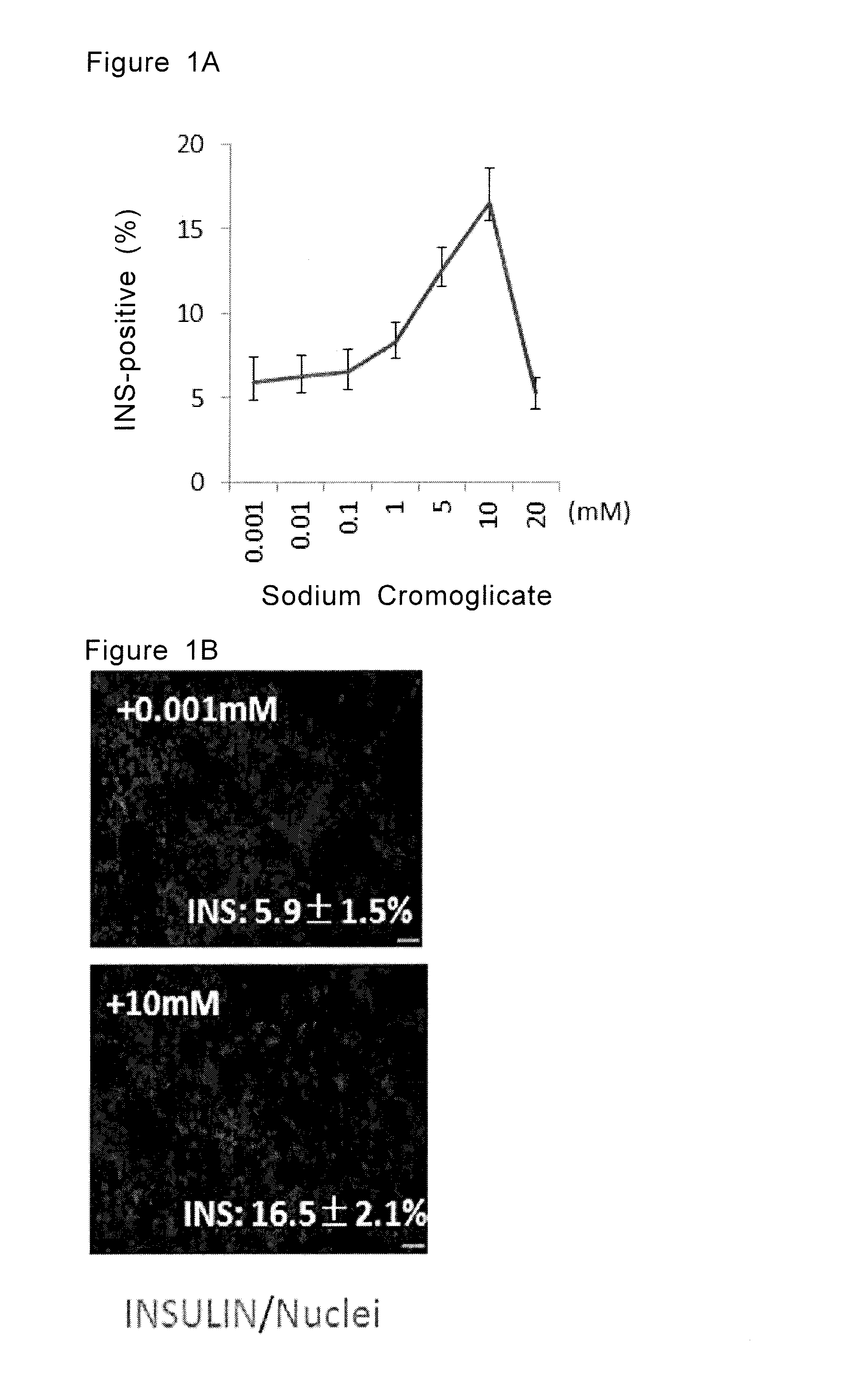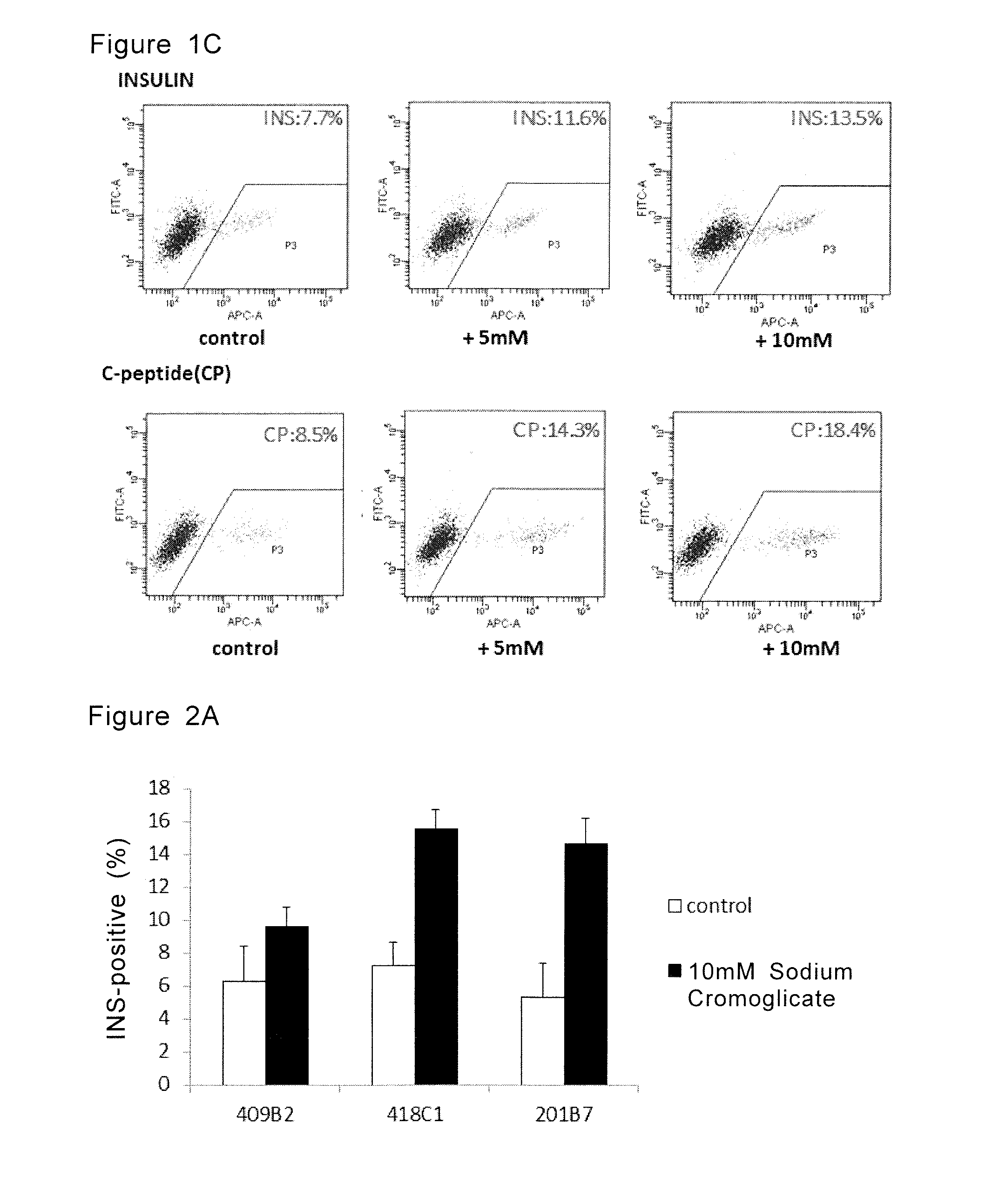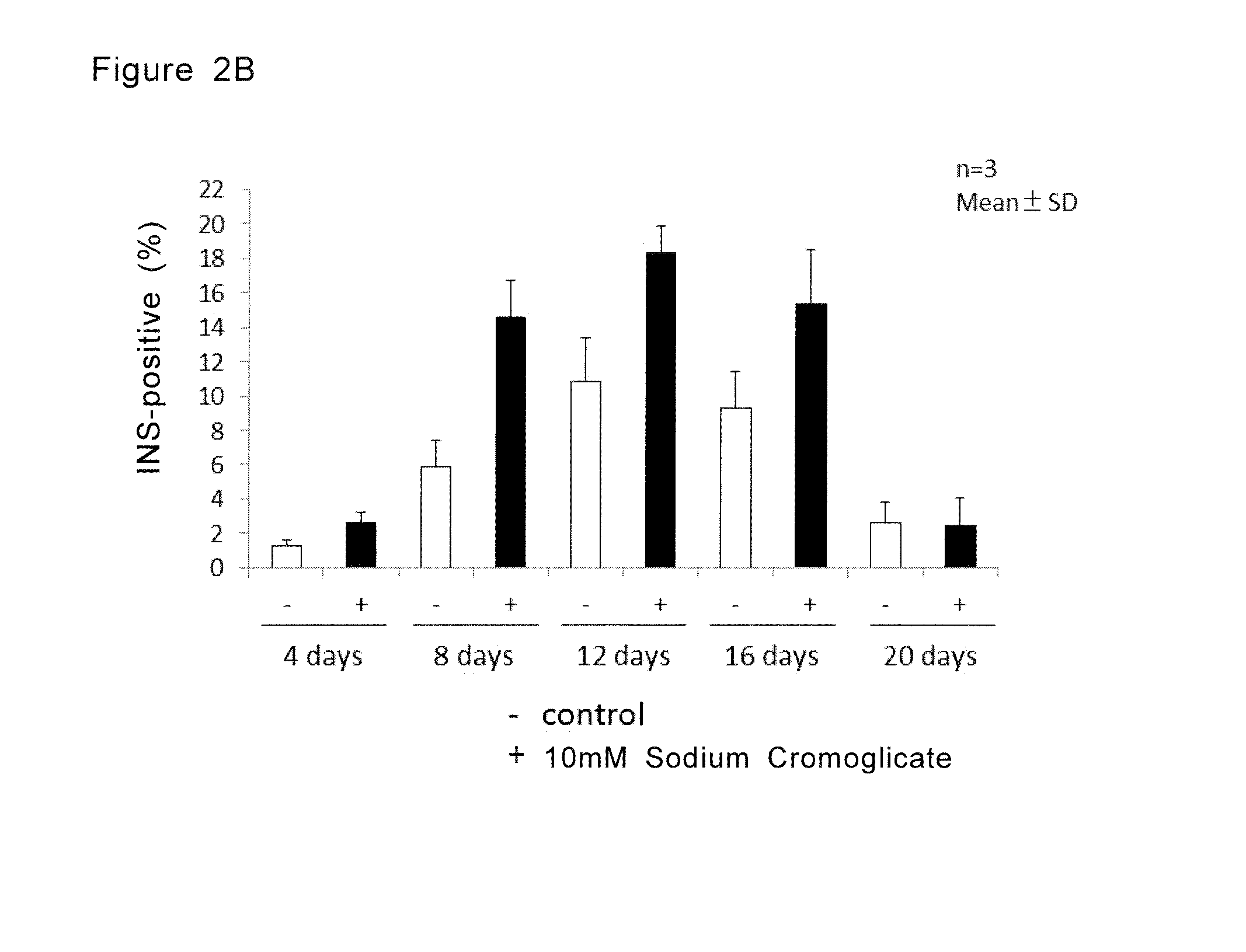Method for generating pancreatic hormone-producing cells
a hormone-producing cell and pancreatic technology, applied in the field of generating pancreatic hormone-producing cells, can solve the problems of insufficient number of pancreas and islets available for transplantation, difficult to cure completely disease, weight gain, etc., and achieve the effect of efficient generation
- Summary
- Abstract
- Description
- Claims
- Application Information
AI Technical Summary
Benefits of technology
Problems solved by technology
Method used
Image
Examples
example 1
Examination of Effects of Sodium Cromoglicate
[0125]Human ES cell line KhES3 was obtained from Kyoto University and maintained in the manner as shown in H. Suemori et al. (2006), Biochem. Biophys. Res. Commun., 345:926-932, the contents of this document is herein incorporated by reference. The cells of KhES3 were differentiated into insulin producing cells according to the steps shown below. The colonies of the human ES cell line grown to approximately 70% confluent in the culture plate were dissociated from the plate by using CTK solution (Reprocell). The dissociated colonies were then divided into single cells using Accutase™ and seeded in 24 well plates (Greiner) at 2.0×105 / well.
[0126]The cells were cultured in RPMI medium containing 2% FBS added with activin A (100 ng / ml) and CHIR99021 (3 μM) for 5 days.
[0127]During this period, the medium was changed with the same fresh medium on the third and the fourth days.
[0128]The cells obtained in Step 1 were cultured in improved MEM Zinc ...
example 2
Example with an iPS Cell Line
[0131]Human iPS cell line 201B7 (this cell line can be obtained from Center for iPS Cell Research And Application, Kyoto University, Takahashi K et al, Cell. 2007 131:861-72., the contents of this document is incorporated herein by reference) was used. The iPS cells were differentiated into insulin producing cells by using the following steps. The colonies of the iPS cell line were grown to 70% confluent in the culture plate and dissociated from the plate by using CTK solution (Reprocell). The dissociated colonies were then divided into single cells using Accutase™ and seeded in 24 well plates (Greiner) at 2.0×105 / well.
[0132]The cells were cultured in RPMI medium containing 2% FBS added with activin A (100 ng / ml) and CHIR99021 (3 μM) for 5 days. During this period, the medium was changed with the same fresh medium on the third and the fourth days.
[0133]The cells obtained in Step 1 were cultured in improved MEM Zinc Option medium containing 1% B-27 (Invit...
example 3
Examination of Various Conditions
[0137]Three iPS cell lines, 418C1 and 409B2 (Okita K, et al, Nat Methods. 2011 8:409-412) and 201B7, all of which were generated from fibroblast cells, can be obtained from Center for iPS Cell Research and Application, Kyoto University. The iPS cell lines obtained from Kyoto University were differentiated into insulin positive cells by subjecting the cells to the same steps as those in Examples 1 and 2 with the exception that the concentration of sodium cromoglicate in the culture medium used in step 3 was 10 mM.
[0138]Results showed that all three iPS cell lines were differentiated into insulin positive cells and the ratio of insulin positive cells were increased by the addition of sodium cromoglicate in step 3 (FIG. 2A).
[0139]In step 3, the cells from 201B7 were cultured 4 days, 8 days, 12 days, 16 days and 20 days and confirmed that the ratio of insulin positive cells was increased in the groups cultured for 8 days, 12 days and 16 days in step 3. T...
PUM
 Login to View More
Login to View More Abstract
Description
Claims
Application Information
 Login to View More
Login to View More - R&D
- Intellectual Property
- Life Sciences
- Materials
- Tech Scout
- Unparalleled Data Quality
- Higher Quality Content
- 60% Fewer Hallucinations
Browse by: Latest US Patents, China's latest patents, Technical Efficacy Thesaurus, Application Domain, Technology Topic, Popular Technical Reports.
© 2025 PatSnap. All rights reserved.Legal|Privacy policy|Modern Slavery Act Transparency Statement|Sitemap|About US| Contact US: help@patsnap.com



